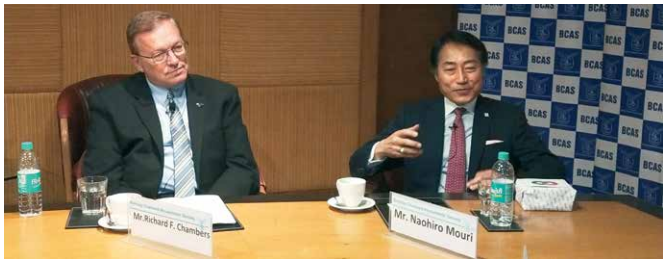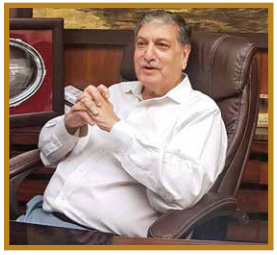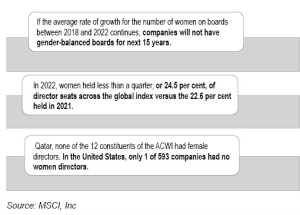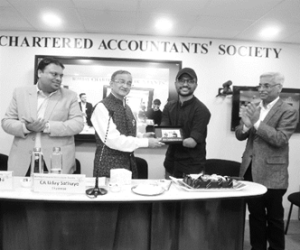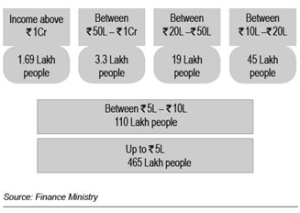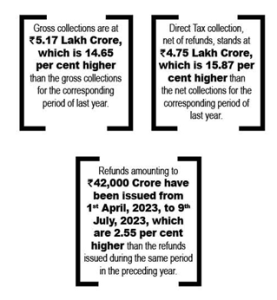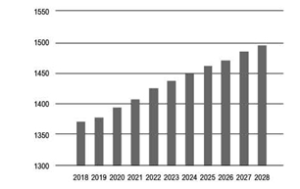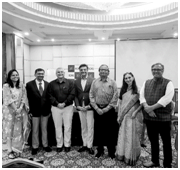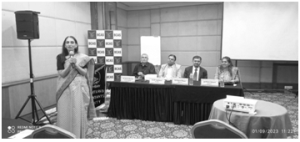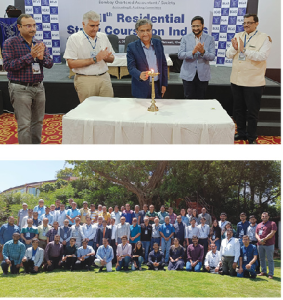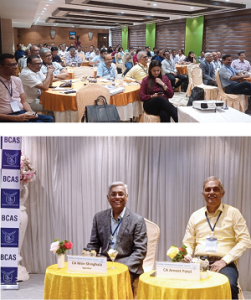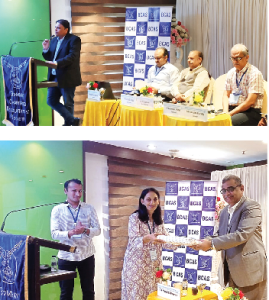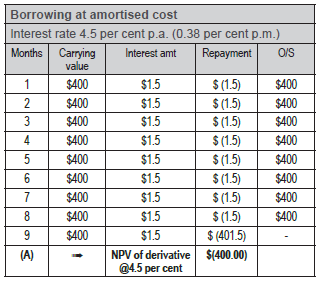Alternative Investment Funds (AIFs) play a vital role in India’s economy. They provide risk capital in the form of equity/quasi-equity capital for pre-revenue stage companies, early and late-stage ventures, growth companies that wish to scale their operations, and even companies facing distress.
The size of AIFs has grown to a significant amount over the years. There are around 1,100 AIFs registered with SEBI with over 8.44 trillion INR in commitments (as of 30th June, 2023), witnessing an annual growth rate of over 30 per cent.
Considering the need of the economy for such funds, its growth and the huge amount committed, SEBI, aptly supported by its policy advisory committee, is continuously making sincere attempts to ensure transparency and good governance. Recently in May 2023 SEBI, in its consultation paper titled “Consultation paper on proposal with respect to pro-rata and pari-passu rights of investors in Alternative Investment Funds (AIFs)”, has empathetically asserted:
“Considering that fair treatment of investors is a core and inherent principle for a pooled investment vehicle, as also evident from global references given above it is essential to expressly provide that AIFs shall not provide any differential treatment to investors which affects economic rights of other investors. Therefore, it is necessary to explicitly provide for fair treatment of all investors as a principle under the AIF Regulations, from the perspective of investor protection.” (para 31 — emphasis supplied)
The objective of this article is to critically examine the extant regulations on pari-passu and pro-rata rights of investors in AIF and the fair treatment of all investors as regards investors joining a fund at different points in time.
What is pari-passu?
Pari-passu is a Latin term that means “ranking equally and without preference.” Applied in the context of investments, pari-passu means that multiple parties to an investment joining an investment scheme at different points of time with varying amounts are treated the same, “ranking equally and without preference — in the sense that the assets or securities would be managed with equal preference or a preference weighted on the value or amount invested and when invested in either the asset or securities.”
Fundraising by an AIF scheme/ fund:
SEBI Regulations governing AIFs viz. SEBI (Alternative Investment Funds) Regulations, 2012, contemplate that a fund approved by SEBI may be able to attract investors to such a fund at different points of time, committing varying amounts (subject to the minimum prescribed). The terms used for investors joining at different points of time are (i) investors joining at the time of First Closing, (ii) investors joining at Subsequent Closing(s), and (iii) investors joining at the time of Final Closing. The Private Placement Memorandum (PPM — explained later) (in section VII) requires each scheme to specify indicative timelines for Initial closing, Subsequent closing(s), Final closing, Commitment Period and Term of the Fund/Scheme.
Considering the above, there is a need to place all these investors joining at different points of time with varying amounts on equal footing.
In mutual fund equity schemes where daily NAV based on the market prices is readily available, all subsequent investors join based on this daily NAV at the time of joining.
However, the investments by most AIFs are in private equity/ quasi equity. These investments have certain time frame depending on the period of nurturing required and success and growth of the ventures. They are illiquid investments and can’t have daily market value. Considering this limitation, the best way to put these investors joining at different points of time with varying amounts is by ensuring equal IRR (Internal Rate of Return) or equal RoI (Return on Investment) for all investors. The implementation of this system may be practically cumbersome and, therefore, in order to simplify the process, in cases of AIFs, this is ensured by what is popularly known as equalization method. In this method, there are three different types of contributions which investors joining during subsequent closing(s) and final closing have to pay — Catch-up Contribution, Compensatory Contribution and Management Fees Additional Contribution. The first two viz. Catch-up Contribution and Compensatory Contributions are meant to place subsequent investors on equal footing vis-à-vis earlier investors and therefore, are distributed by the fund amongst earlier investors on pro-rata basis.
In this article, I am making an attempt to specifically focus on the following:
• The precise nature of Catch-up Contribution and Compensatory Contribution.
• How they are quantified, collected from subsequent contributors (investors) and distributed pro-rata amongst original/ prior contributors.
In Annexure 1, I have brought out the key concepts and the regulatory framework that guides the functioning of AIFs.
The subject of the economic rights of investors during fundraising by AIF — specifically in the context of Category II AIF is very significant.
MODEL CONTRIBUTION AGREEMENT:
Every investor investing in an AIF has to enter into an agreement which is called a Contribution / Subscription Agreement.
The format of PPM provided by SEBI in Part A in Section VII titled ‘Principal Terms of the Fund/Scheme’ requires the Investment Manager to specify the indicative timeline for various closings, the payments unitholders participating in subsequent closings have to make (like catch-up contribution, compensatory contribution).
SIDBI, which manages Fund of Funds, on its website, provides a model contribution agreement.
https://www.sidbivcf.in/files/new_announcement/Model per cent20Contrubution per cent20Agreement per cent20for per cent20AIFs.pdf
The relevant definitions for the present subject are:
• “Catch-up Contribution”
• “Compensatory Contribution”
• “Final Closing”
• “First Closing”
• “Subsequent Closing”
• “Subsequent Contributor”
Clause 3 of this model agreement deals with the “Induction of new contributors and the issue of Units.”
For brevity, the same are not reproduced here.
On reading the above definitions and clause 3 of the model agreement and requirements of PPM, it conveys:
1. At every subsequent closing up to the Final Closing, subsequent contributors shall pay Catch-up Contribution as well as Compensatory Contribution.
2. Both these amounts collected by the Fund shall be distributed amongst the contributors who were admitted prior to such subsequent closing pro rata in proportion to their respective capital contributions.
Considering the above-stated provisions usually contained in all contribution/ subscription agreements and similar provisions contained in PPMs, it is evident that AIFs have to collect catch-up and compensatory contributions from subsequent investors and distribute the same pro-rata amongst prior/ earlier investors.
The next step is to understand how these two contributions are quantified, collected and distributed.
The methodology of quantifying, collecting and distributing Catch-up Contributions and Compensatory Contributions are explained using case studies.
CATCH-UP CONTRIBUTION:
Before a private equity fund is launched, the IM solicits commitments to invest from potential investors. These soft commitments are not legally binding and do not represent future subscriptions. They, however, indicate as to how much capital might be raised.
Once the IM decides to launch the fund, the PPM is published and circulated amongst potential/prospective investors. Thereafter, hard commitments are made by investors with whom contribution/subscription agreements are signed.
The IM can seek to raise additional commitments and capital at any time between the First Closing and the Final Closing.
The above is illustrated below by a hypothetical case of Rahul Fund as at First Closing on 30th November, 2018 (Table no. 1):
|
Investor
|
COMMITMENT(INR)
|
OWNERSHIP
|
| The IM |
5,00,00,000 |
10 per cent |
| Investor1 |
15,00,00,000 |
30 per cent |
| Investor 2 |
15,00,00,000 |
30 per cent |
| Investor 3 |
15,00,00,000 |
30 per cent |
| TOTAL |
50,00,00,000 |
100 per cent |
The Fund issues a drawdown notice dated 1st December, 2018 calling upon the investors to contribute 10 per cent aggregating to Rs. 5,00,00,000 and all investors send their contributions by 31st December, 2018. Accordingly, the above data will appear as under (Table no. 2):
| INVESTOR |
COMMITMENT |
OWNERSHIP |
DRAWDOWN 1 |
| The IM |
5,00,00,000 |
10 per cent |
50,00,000 |
| Investor1 |
15,00,00,000 |
30 per cent |
1,50,00,000 |
| Investor 2 |
15,00,00,000 |
30 per cent |
1,50,00,000 |
| Investor 3 |
15,00,00,000 |
30 per cent |
1,50,00,000 |
| TOTAL |
50,00,00,000 |
100 per cent |
5,00,00,000 |
One year after the Initial Closing, the IM decides to seek additional capital commitments and finds an investor (Investor 4 in the table below). Rahul Fund’s investor allocation will now be as under (Table no. 3):
| INVESTOR |
COMMITMENT |
OWNERSHIP |
DRAWDOWN 1 |
| The IM |
5,00,00,000 |
8.33 per cent |
50,00,000 |
| Investor1 |
15,00,00,000 |
25 per cent |
1,50,00,000 |
| Investor 2 |
15,00,00,000 |
25 per cent |
1,50,00,000 |
| Investor 3 |
15,00,00,000 |
25 per cent |
1,50,00,000 |
| Investor 4 |
10,00,00,000 |
16.67 per cent |
NIL |
| TOTAL |
60,00,00,000 |
100 per cent |
5,00,00,000 |
With this additional investor’s commitment, the initial investors’ ownership has been diluted, yet the new investor hasn’t paid anything into the fund. Investor 4 could simply make the initial drawdown payment to balance things out, but this wouldn’t accurately compensate the initial investors and would eat into Fund’s IRRs.
Instead, an equalisation needs to be completed.
What is equalisation — catch-up contribution?
Equalisation is the process of truing up all investors as if they had all joined a fund on its initial closing date. The process of doing so is multi-pronged. This is called catch-up contribution.
First, Investor 4 pays in drawdown 1 on 31st December, 2019. But rather than making the payment to the fund, the payment is allocated across the initial investors, according to their percentage of ownership of the fund (Table no. 4).
| INVESTOR |
COMMITMENT |
OWNERSHIP |
DRAWDOWN 1 |
Returned/called |
Adj.Drawdown1 |
Per cent drawdown |
| The IM |
5,00,00,000 |
8.33% |
50,00,000 |
(8,35,000) |
41,65,000 |
8.33 |
| Investor1 |
15,00,00,000 |
25% |
1,50,00,000 |
(25,00,000) |
1,25,00,000 |
25 |
| Investor 2 |
15,00,00,000 |
25% |
1,50,00,000 |
(25,00,000) |
1,25,00,000 |
25 |
| Investor 3 |
15,00,00,000 |
25% |
1,50,00,000 |
(25,00,000) |
1,25,00,000 |
25 |
| Investor 4 |
10,00,00,000 |
16.67% |
NIL |
83,35,000 |
83,35,000 |
16.67 |
| TOTAL |
60,00,00,000 |
100% |
5,00,00,000 |
NIL |
5,00,00,00 |
100 |
The magic of equalisation is putting Investor 4 as if Investor 4 had joined the Fund at the time of initial closing — at par with the IM and other three Investors 1, 2 & 3.
Clause 3.1.of the model agreement also states:
“The Investment Manager shall promptly distribute Catch-up Contributions amongst the Contributors who were admitted prior to such Subsequent Closing pro rata in proportion to their respective Capital Contributions and such amounts distributed to the Contributors shall be added back to their Unpaid Capital Commitments, ……….”
This provision is illustrated as under (Table no. 5):
| INVESTOR |
COMMITMENT |
DRAWDOWN 1 |
Unpaid capital commitment |
Returned/called |
Adj.Drawdown1 |
Adjusted unpaid capital |
| The IM |
5,00,00,000 |
50,00,000 |
4,50,00,000 |
(8,35,000) |
41,65,000 |
4,58,35,000 |
|
| Investor1 |
15,00,00,000 |
1,50,00,000 |
13,50,00,000 |
(25,00,000) |
1,25,00,000 |
13,75,00,000 |
|
| Investor 2 |
15,00,00,000 |
1,50,00,000 |
13,50,00,000 |
(25,00,000) |
1,25,00,000 |
13,75,00,000 |
|
| Investor 3 |
15,00,00,000 |
1,50,00,000 |
13,50,00,000 |
(25,00,000) |
1,25,00,000 |
13,75,00,000 |
|
| Investor 4 |
10,00,00,000 |
NIL |
nil |
83,35,000 |
83,35,000 |
9,16,65,000 |
|
| TOTAL |
60,00,00,000 |
5,00,00,000 |
45,00,00,000 |
NIL |
5,00,00,00 |
55,00,00,000 |
|
From this Table No. 5, it is evident that the share in catch-up contribution received by The IM and Investors 1, 2 and 3 adds up to unpaid capital commitment by all four of them. This, in essence, means that the share in the catch-up contribution received is part refund of the amount they had already paid. This is relevant in deciding the taxability, if any, of this share in catch-up contribution received by original/ prior investors.
The cardinal principle of an AIF is — All investors have to be treated at par — equally treated (barring a few issues like set-up fees, and management fee structure). This ‘catch-up contribution’ has the effect of putting all investors on an equal footing. The outcome should be that, having re-balanced contributed capital, the amount of uncalled capital for each partner is consistent with the percentage ownership of each partner after this subsequent closing.
A basic premise in the treatment of subsequent closings is that subsequent investors should be treated as if they had invested at the beginning.
Following this principle, the new/subsequent investors who join at a later date are put at par with original/ prior investors following this system of catch-up contribution and its pro rata distribution amongst prior/ original investors.
Note that, so far, it appears that the fund does not receive cash on 31st December, 2019; the net effect of the cash flows shown is zero as the flows simply re-balance the investor’s capital
COMPENSATORY CONTRIBUTION:
However, there is one more area where also, both these types of investors need to be put at par — time value of money.
In the given case, the original three investors and the IM had put their money by December, 2018. Whereas the new investor 4 puts his pro rata contribution in December, 2019 — after a lapse of a year. This issue is addressed by what is called Compensatory Contribution in India and Equalisation Interest abroad. The same is amplified as under.
What is Equalisation Interest — called Compensatory Contribution in India?
In the given case, the IM and 3 original investors paid their first drawdown on 31st December, 2018. Whereas, Investor 4 pays Rs. 83,35,000 only on 31st December, 2019 — after a time lapse of 1 year. To compensate for this, Investor 4 also pays compensatory contribution at a specified rate per annum. Normally, this rate is the Hurdle Rate provided in the Contribution/ Subscription Agreement. This compensatory contribution is also distributed amongst original/ prior investors pro-rata.
The collection of Compensatory Contribution from the new investor and distribution of the same amongst the IM and original three investors will put all investors at par vis-à-vis each other. Any drawdown(s) thereafter will be paid by all the 5 investors as per their respective shares of unpaid capital commitments.
The impact of Compensatory Contribution is illustrated on the following page:
| INVESTORS |
DATE |
AMOUNT |
Per cent HOLDING |
Equalisation Interest |
| Original Investors: |
|
|
|
|
| Investment Manager |
31-12-2018 |
2,00,00,000 |
7.41 per cent |
1,95,09,000 |
| Investor 1 |
31-12-2018 |
20,00,00,000 |
74.07 per cent |
19,50,11,000 |
| Investor 2 |
31-12-2018 |
5,00,00,000 |
18.52 per cent |
4,87,60,000 |
| Final Closing: |
|
|
|
|
| Investor 3 |
30-06-2021 |
94,00,00,000 |
|
-26,32,80,000 |
Investor 3 pays interest at 10 per cent p.a. (compounded quarterly), being hurdle rate, from 31st December, 2018 to 30th June, 2021.
The readers will notice the loss original investors would suffer (almost close to 100 per cent of the invested amount) if an investment manager decides to waive this equalisation interest.
These calculations look relatively easy and straightforward, but it is easy to imagine how they quickly become increasingly complex as factors multiply. Funds might have multiple capital calls that they need to track between the initial and subsequent closing, as well as multiple closings with different investors on-boarding at different times.
Whether Investment Manager has the right to waive Catch-up and/or Compensatory Contributions?
Clause 3 of the Model Contribution Agreement deals with the Induction of new contributors and issue of Units). This clause states — “The Investment Manager shall however, have the power to waive or increase/reduce, subject to the consent of the Advisory Committee, the Compensatory Contribution on Catch-up Contributions to be received and accepted at such Subsequent Closings.”
In this context, readers’ attention is invited to SEBI’s Consultation paper with respect to pro-rata and pari-passu rights of investors issued in May 20231. In this paper, inter alia, it is stated, “While the above principle is not explicitly stated in AIF Regulations, maintaining pro-rata rights of investors in each investment of the scheme of AIF, including while making distribution of investment proceeds, is an essential characteristic of the AIF structure.”
1. https://www.sebi.gov.in/reports-and-statistics/reports/may-2023/consultation-paper-on-proposal-with-respect-to-pro-rata-and-pari-passu-rights-of-investors-of-alternative-investment-funds-aifs-_71540.html
Considering the above, the right, if any, of the investment manager to waive catch-up and/ or compensatory contribution has to be subject to conditions, and the fund and the trustee are responsible for ensuring pari-passu rights of all investors — initial as well as subsequent — at all times.
As mentioned earlier, accounts of each fund have to be audited each year and the auditor may consider examining, during the course of audit, whether the fund has collected and distributed catch-up as well as compensatory contributions from subsequent investors or not. And, if not, the auditor needs to examine whether such an act affects the pro-rata and pari-passu rights of investors or not. If the auditor finds that it affects this essential characteristic of the AIF structure, it may be his responsibility to suitably report the same.
Taxation of Catch-Up Contribution & Compensatory Contribution:
Also, considering that category II AIF enjoys pass-through status, it is important to understand the income-tax implications of the catch-up contribution and compensatory contribution collected from subsequent contributors and distributed by the Fund amongst prior/ original contributors.
No attempt is made here to analyse income tax implications of these two amounts either in the hands of the Fund or in the hands of contributors (both original as well as subsequent contributors).
However, the potential tax issues are listed as under:
1. The Fund:
• Whether it is a business income and therefore liable to be taxed in the hands of the Fund,
• If not, whether, while passing on both these amounts to original/ prior investors, whether the Fund is required to deduct tax at source? If yes, whether on both the amounts or only on equalisation interest (compensatory contribution)?
2. Subsequent contributors (new investors):
• Whether catch-up contribution as well as compensatory contribution will be treated as ‘cost’ while computing their taxable capital gain? If not, does it mean that same will not give any tax relief in respect thereof to such subsequent investors?
• Whether compensatory contribution which is in the nature of equalization interest (and not actual interest) can be claimed as deduction while computing gross taxable income of such a subsequent contributor in the year of payment?
3. Original / prior contributors:
• Whether these amounts are ‘capital receipts’ or ‘revenue receipts’?
• Whether catch-up contribution received can be adjusted against the amounts paid against earlier drawdown(s) to reduce that amount?
• If not, whether the catch-up contribution is liable to be taxed as capital gain or as income from other sources?
• Whether compensatory contribution (which is in the nature of equalisation interest) liable to be taxed as ‘interest income’? Or, whether the same too will go to reduce the cost already incurred? [NOTE: It is important to note that these so called ‘subsequent investors’ too will qualify to receive both ‘catch-up contribution’ as well as ‘compensatory contribution’ whenever there is any fresh round of fund-raising post their investment.]
CONCLUSION
Considering the above, I submit that it is the responsibility of the Investment Managers, PPM Auditors and Investors to assess if the true principles of catch up and compensatory contributions have been followed.
i. The investment managers have to decide whether to adopt equalisation method at the times of each subsequent closing(s) and final closing.
ii. The AIF PPM Auditors (who can be internal/external auditors or legal professionals), while conducing audits of PPM and annual accounts, have the responsibility to examine the actions and decisions of the IM and, if required, to report on the same.
iii. The investors too need to be vigilant as to their rights to receive catch-up and compensatory contributions whenever they notice that the fund in which they have invested has raised fresh commitments.
The writer has come across an instance where the IM, using its discretionary power, waived these contributions even though such a waiver negatively impacted the investor’s economic rights in his regard.
The annual audit of PPM compliance is mandated in the interests of investors. Considering this, SEBI regulations must provide that this annual audit report should also be shared with each investor along with corrective action(s) taken by AIFs. Considering the automation in back-office systems, the time allowed for conducting such an audit too needs to be reduced to maximum 90 days. SEBI also needs to take initiative to form an investors forum which can, on an on-going basis, disseminate information to investors in the matter of their economic rights and representatives of such a forum are included in alternative investment policy advisory committee.
ANNEXURE 1
The background on AIFs is briefly stated for readers’ quick references and understanding.
What is an Alternative Investment Fund (“AIF”)?
Alternative Investment Fund or AIF means any fund established or incorporated in India which is a privately pooled investment vehicle which collects funds from sophisticated investors, whether Indian or foreign, for investing it in accordance with a defined investment policy (stated in PPM) for the benefit of its investors.
AIF does not include funds covered under the SEBI (Mutual Funds) Regulations, 1996, SEBI (Collective Investment Schemes) Regulations, 1999 or any other regulations of the Board to regulate fund management activities. Further, certain exemptions from registration are provided under the AIF Regulations to family trusts set up for the benefit of ‘relatives‘, employee welfare trusts or gratuity trusts set up for the benefit of employees, ‘holding companies‘ etc. [Ref. Regulation 2(1)(b)]
(source – SEBI FAQs)
https://www.sebi.gov.in/sebi_data/attachdocs/1471519155273.pdf
AIFs are regulated by the capital market regulator’s SEBI (Alternative Investment Funds) Regulations, 2012 as amended from time to time and circulars issued by SEBI.
https://www.sebi.gov.in/legal/regulations/apr-2017/sebi-alternative-investment-funds-regulations-2012-last-amended-on-march-6-2017-_34694.html
SEBI’s Master Circular dated 31st July, 2023 on AIFs:
https://www.sebi.gov.in/legal/master-circulars/jul-2023/master-circular-for-alternative-investment-funds-aifs-_74796.html
SEBI circulars on AIFs:
https://www.sebi.gov.in/sebiweb/home/HomeAction.do?doListingAll=yes&cid=25
SEBI also has formed Alternative Investment Policy Advisory Committee under the chairmanship of Mr N R. Narayana Murthy. This committee has published three reports which are available on SEBI’s website.
Report dated 31st December, 2015:
https://www.sebi.gov.in/sebi_data/attachdocs/1453278327759.pdf
Report dated 26th November, 2017:
https://www.sebi.gov.in/sebi_data/attachdocs/jan-2018/1516356419898.pdf
In terms of SEBI AIF Regulations it is mandatory to obtain certificate of registration from SEBI for enabling AIFs to operate under one of the following 3 categories:
• Category I — AIFs which invest in start-up or early stage ventures or social ventures or SMEs or infrastructure. Includes venture capital funds, SME funds, social venture funds, infrastructure funds, angel funds, etc.
• Category II — AIFs, which do not fall in Category I or Category III and which do not undertake leverage or borrowing other than to meet day-to-day operational requirements. Includes private equity funds or debt funds for which no specific incentives or concessions are given by the government or any other regulator.
• Category III — AIFs, which employ diverse or complex trading strategies and may employ leverage including through investment in listed or unlisted derivatives. Includes hedge funds or funds, which trade for short term returns, or open-ended funds, for which no specific incentives or concessions are given by the government or any other regulator.
Private Placement Memorandum (PPM):
The PPM is a risk disclosure document (akin to a prospectus issued by a company making public issue) used for marketing a fund to its potential/ prospective investors.
In terms of Regulation 12, AIF has to, at least 30 days prior to the launch of a scheme, submit Placement Memorandum with the Board and the Board may communicate its comments which will have to be incorporated in the placement memorandum before it can be released to prospective investors. Circular dated 5th February, 2020 issued by SEBI has prescribed format for PPM.
The PPM is divided into two parts — Part A requiring minimum disclosures in respect of 15 sections listed in annexure I to the circular and Part B where any additional information in relation to the Fund/Scheme, Manager, investment team which does not form part of the standard disclosures and the section-wise supplementary section under the earlier sections, can be indicated. Considering a sizable amount invested by each investor and high risks associated with such investments, investors should read the PPM and understand the precise nature of the fund where the amount is being invested, particularly provisions which directly or indirectly affect investors’ economic and legal rights.
http://www.aibi.org.in/Circulars/Disclosure per cent20Standards per cent20for per cent20Alternative per cent20Investment per cent20Funds per cent20(AIFs).pdf
https://www.sebi.gov.in/sebi_data/commondocs/feb-2020/an_1_p.pdf
Economic rights:
The parity of economic rights between investors of AIFs is necessary as well as critical. It is observed that at times, the PPMs adopt different practices which provide differential benefits/rights to certain investors over others. Few such terms on which differential economic rights are provided by AIFs are Drawdown timeline, Hurdle rate of return/performance linked fee, Transfer rights, Information rights, Compensatory contribution for investors on-boarded in subsequent closings including catch-up contribution for maintaining pro-rata rights of investors, and Co-investment rights.
Even though PPMs may provide equal rights to investors in these matters, the IMs may, using their discretion, give such preferential rights to a select group of investors or waive catch-up as well as compensatory contributions. As the minimum investment amount prescribed is rupees one crore, general perception is that the investors are sophisticated and capable of taking decision to invest after properly studying PPM and understanding its contents. However, this perception in reality may not be correct.
AIFs and AUDIT REQUIREMENTS:
To complement the measures prescribed by SEBI, chartered accountants as auditors and consultants, also have an important role to play to ensure orderly growth of AIFs and protection of investors’ economic rights.
The accounts of each fund managed by a registered AIF have to be audited annually by a qualified auditor. Each AIF has to provide Annual Report to all its investors including financial information of investee companies and detailed risk profiles. The auditor’s report along with audited accounts are shared with the investors in each such fund along with the annual report. In order to further protect investors’ interests, SEBI circular has introduced a specific requirement that the terms of a contribution or subscription agreement (by any name it may be called) signed with each investor must be aligned with the terms of the Private Placement Memorandum (PPM — what is PPM is explained earlier) and contribution agreement cannot go beyond the terms of the PPM. The Investment Managers are required to ensure that they carry out all activities of the AIF in accordance with the PPM and that they should maintain fairness in ensuring that investors economic and legal rights are of paramount importance.
Also, with a view to ensure that the management team has complied with the terms of PPM, SEBI has introduced a requirement for annual audits of PPM. The results of the audit and any necessary corrective action must be shared with (i) the Trustee, Board, or Designated Partners of the AIF; (ii) the Board of the Manager; and (iii) SEBI within six months of the financial year’s end.
AIFs that have not received any funding from investors are exempt from the requirement of audit compliance. However, within six months of the end of the financial year, a Certificate from a Chartered Accountant declaring that no money has been raised must be provided to support this claim.
Considering SEBI’s persistent attempts to increase good governance and risks management in the management of AIFs through compliances and disclosures, management teams face number of challenges in their functioning and time is not far when large sized funds will need external audit firms to conduct internal audits to assist the management.
Considering the above, such high risk non-traditional investments present number of challenges to chartered accountants as auditors, tax experts & consultants to ensure that they discharge their expected obligations with due care and caution.
Considering the huge amount generated by AIFs, the responsibilities cast on auditors are enormous and, therefore, the auditors need to be familiar with various special features of AIFs, particularly economic rights of investors. One such important feature is — investors joining a fund at different points of time and ensuring they all stand in equal footing — paripassu.
In May 2023, SEBI had come out with several proposals for stricter regulations of AIFs. SEBI issued four consultation papers.
AIF Taxation:
Category I and Category II AIFs enjoy pass-through status. This subject is known to most tax practitioners.
Government’s role in AIF Funding:
Fund of Funds:
Government of India (GoI) created access to a large capital of funds for startups in India, through the scheme “Fund of Funds for Start-ups” to create a nation of job creators than job seekers. This Fund is operated by SIDBI. https://www.sidbivcf.in/en
Self-Reliant India (SRI) Fund — Mother-Daughters Fund:
MSME Sector is very important for the Indian economy in terms of contribution to GDP and employment generation. Considering that the GoI has set-up SRI Fund (Mother Fund) to assist MSME sector through Daughters Fund in the form of Category II Alternative Investment Fund (AIF) who are oriented towards providing funding support to MSMEs as growth capital, in the form of equity or quasi-equity. The details are available at https://dcmsme.gov.in/Final per cent20SRI per cent20Operating per cent20Guidelines per cent20 per cent20approved per cent20by per cent20Minister per cent20 per cent2017 per cent2008 per cent202021.pdf
The SRI Fund is managed by NSIC Venture Capital Fund. The details are available at http://www.nvcfl.co.in/AboutUs

